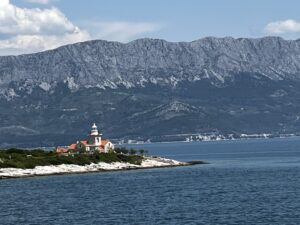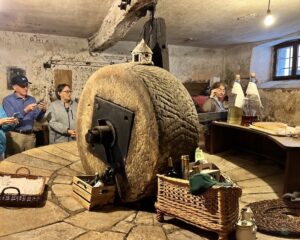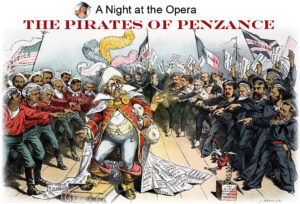In banking, when they’re trying to teach you about counterfeit money, they don’t give you counterfeit money. They give you real money, over and over and over again. You learn the feel of it. Then you can identify counterfeit money just from the feel of it. You need to be able to identify bad education just from the feel of it.
—Martin Cothran
 These telling words hit my ear while packing up last Friday night before leaving Croatia Saturday morning. My audio choice at such moments rarely involves music; instead, I turn to podcasts and downloads of tantalizing sessions I’m unable to hear live at conferences. Believe me, after the bustle of a tour agenda, such a quiet space in time is to be savored.
These telling words hit my ear while packing up last Friday night before leaving Croatia Saturday morning. My audio choice at such moments rarely involves music; instead, I turn to podcasts and downloads of tantalizing sessions I’m unable to hear live at conferences. Believe me, after the bustle of a tour agenda, such a quiet space in time is to be savored.
What is not to be savored, of course, is the challenge of packing. After dumping everything on my bed and comparing its bulk against the volume of my suitcase, I needed a miracle. That need caused me to click on a ‘back issue” of Memoria Press’s podcast series Classical Et Cetera, choosing an episode from January 8, 2021 devoted to the topic “Understanding the Classical View of Literary Criticism.” Literary criticism ought to help with cramming a suitcase shut, right?
Classical Et Cetera was launched by Memoria Press in 2020 and is headed by Sean Saxon, a strong, level-headed thinker whose personality blends brilliantly with that of his team: Martin Cothran, Tanya Charlton, and Paul Schaeffer. Their discussions inspire me, in part, because I admire each of them so much. On the other hand, the rapid growth of this podcast indicates I am not alone.
Midnight approached and the pile on the bed was transforming into a web of cloth cannelloni topped with a ragout of souvenirs. And that’s when Cothran’s metaphor struck me. First of all, it is “classic Martin Cothran” (and he is one of my favorite speakers).

Beyond that, the metaphor gave me pause after seventeen days of life in Croatia and Slovenia, first visiting friends, and then springing between hotels and buses as the Smithsonian lecturer for a superb group of tourists visiting the Adriatic Coast. These well-versed folks came both to luxuriate in the region’s beauty and to thrash their way through the complex history of the Balkan peninsula.
Nearly a week later, I am still wrapped in the sensations of the crystalline-blue Adriatic, the towering Dinaric Alps that border that sea, the aroma of Asiatic Jasmine (invasive but glorious unless you have allergies), and scrumptious food daily that was so fresh, it seemed to jump from the garden and sea onto the plate.
And then there was the olive oil! Experiencing olive-oil tastings offered by local growers has to be my favorite part of the route (after the art museums, of course). Several times, in fact, we stop at locations where century-old stone wheels turned by wooden turnstiles still stand and can function!

The scent of olive oil literally permeates the air. Plus, after a professional olive-oil tasting or two, we become experts. Okay, we are not experts, but we are on the path to discerning the real from the counterfeit. We learn, for example, that there is no such thing as “extra-virgin” olive oil. That is a marketing device that has snared many of us. Virgin olive oil simply means the first pressing. This is the best. Any verbiage after that is superfluous and, you might say, presents a counterfeit product.
Seeking the real, the true, while learning to discern the counterfeit is a huge task to which we are called. As Cothran said, the best way to identify the counterfeit is to become familiar with the real. His metaphor sums up the purpose behind the work so many of us do, particularly within the movement loosely called the Educational Renewal (with its specific focuses like Charlotte Mason studies and Classical Education).
We fight against the shiny forces of the counterfeit. We suffer, as a society, from the damage done when the real ingredients of learning were trashed by a seemingly unstoppable bureaucracy across the last sixty, seventy, hundred-plus years. We are crushed by the societal burden of young people who cannot read, cipher or find continents on a map. Children fed counterfeit learning lost their chance to master the core skill of handwriting. Their boundless ability to learn meaningful texts “by heart” (memorize) has atrophied or died. In many cases, their curiosity about history, literature, culture, and the world at large is dulled or extinguished.
In place of what real learning would have yielded in their lives too often stands the shadow of that double-edged sword called digital technology—a force capable of bringing both good and evil into our modern lives. The good from technology takes effort, discipline, and discernment to obtain. The evil is immediate and quickly consumes a young mind.
Thus, the image of olive oil stays on my mind. Like many who travel this region, I came home and tossed out my half-used bottles of olive oil, seeking a brand not resting on claims of “extra”-virginal quality. I made a few other pledges too, including promising myself even more ardently to put out meals that abound in the goodness (realness) of fresh ingredients enhanced by the ancient flavors of lemon, pepper, garlic, and of course olive oil. This promise is not about trends. Nor does it mean no more of Carol’s pretty-doggone-good pot roasts and corned beef with cabbage. Simply, I want to strive ever harder against the counterfeit force that wears us all down, including what passes for food in today’s American society.
It is far easier to seek the authentic in food than in education. You cannot go the market and come back with a mind filled with poetry, mathematical reasoning, music, art, and Latin. But you can use some of the same discernment and careful intention. Those massive wheels of stone that crushed olives in biblical times did exactly what modern wheels do today. The process of making real olive oil is not complicated, whether the equipment is stone and wood or stainless steel regulated by modern gauges. It takes time, patience, and real ingredients: put in fine material, compress it (teach it), and wait for the first yield of oil (the ancient labels of grammar, logic, and rhetoric). Then bring this oil to bear in flavoring the banquet of a child’s life. Do it daily, tirelessly, whether we feel like it or not. Handle it “over and over and over again” until we easily discern what is counterfeit, without value, and what is real.
The same real principles that brought forth aqueducts and Greek tragedies undergird the engineering of space satellites and glorious Bach fugues. They have not changed. And they all begin with the first pressings from a child’s fragrant mind!
***
 Join us for our next very authentic “Night at the Opera” webinar on Gilbert and Sullivan’s The Pirates of Penzance, Tuesday, June 6 at 8 pm Eastern.
Join us for our next very authentic “Night at the Opera” webinar on Gilbert and Sullivan’s The Pirates of Penzance, Tuesday, June 6 at 8 pm Eastern.




Loved this reminder about the values of classical education and putting effort into that which is authentic (with education and food!) Thank you!
Just wonderful! Thank you for the eloquent reminder about why it’s worth persevering with classical education.